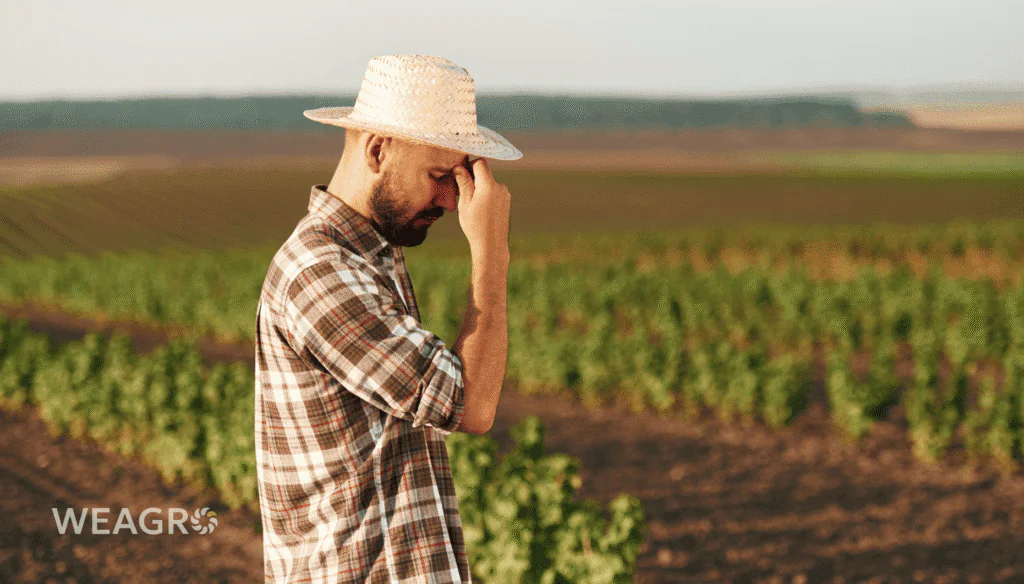Every year, the agricultural season becomes a kind of test for farms: some pass it with excellence, others with retakes or even lost resources. The 2025 season demonstrated a number of mistakes that were repeated on many farms — from unsuccessful decisions in nutrition to miscalculations in logistics or communication with partners. This article is an analytical look at the main “fails” of the season, which cost farmers dearly, and ways to avoid these risks in the future.
The Seasonal Strategy that Wasn’t
One of the most common problems was a missing or insufficiently flexible strategic plan. Many entered the season with a typical set of actions: “like last year,” without considering new risks, trends, or changes in technology. Such copying of last year’s model often results in a loss of efficiency.
The 2025 season began with an unstable spring, which shifted sowing dates. Those who prepared according to old calendars faced prolonged germination and weak starts. Successful farms demonstrated otherwise: constant monitoring of forecasts, readiness for adaptations, prompt reaction to weather changes.
Last-minute Purchases
Those who planned purchases of plant protection products, seeds, or fertilizers without a pre-prepared schedule took a strong hit to the budget. Prices for some items increased by 20-40% compared to the beginning of the year. Farmers who purchased in advance benefited from lower prices or favorable installment terms, especially through specialized services.
Those who postponed decisions until the last moment had to look for substitutes, adapt their technological map, and sometimes buy not what was needed, but what was still available on the market. This caused chain consequences: unexpected crop reactions, loss of yield potential, additional costs for adjusting the nutrition system.
Excessive Economy on Quality
Some farmers decided to “cut” expenses this year, particularly on plant protection products and micronutrients, motivated by high prices or uncertainty in weather conditions. But the economy proved to be false: without the necessary protection, crops became vulnerable to stress, weeds, and pests.
When the situation worsened, they tried to save the crops urgently. But in agriculture, this is usually a “catch-up game,” where the winner is not always the farmer. The result: unrealized harvest and even higher costs.
Ignoring Soil Analysis
In many farms, decisions on the nutrition system were made without updated agrochemical analyses. The result was imbalances in norms: excess nitrogen in some places, lack of potassium or boron in others. All this led to inefficient nutrient absorption and a decrease in overall field productivity.
Farmers who invested in diagnostics and based decisions on specific indicators, on the contrary, managed to reduce costs without losing yield. This experience once again emphasizes that agribusiness is an exact science, not an intuitive calculation.
Logistics Bottlenecks
Another unfortunate factor was inconsistency in logistics. Delivery delays, overcrowded warehouses, long waits for transport — all of this forced postponement of work, loss of optimal timing, and working in emergency mode.
Some farms did not think through the logistics model to the end: neither delivery schemes nor backup options in case of failures. In conditions where every day counts, this results not only in stress but also in financial losses.
Underestimation of Digital Solutions

Despite the availability of modern tools for accounting, analytics, and monitoring, many farms continued to work “by eye” or keep records in notebooks. As a result, the overall picture was lost: there was no operational data on expenses, plot productivity, or resource consumption.
Digital solutions that could save time and money remained inaccessible simply because they “didn’t have time to figure it out.” Although the trend towards digitalization in agriculture is obvious — it’s no longer an option, but a necessity.
Shortage of Working Capital
A significant part of the season’s mistakes had a financial basis. Lack of working capital forced compromising decisions: buying less or later, abandoning part of the planned work, reducing treatments. This was especially true for small and medium-sized farms that did not have a safety cushion or access to financing.
At this stage, those who had pre-arranged payment deferrals or used agricultural installment services were saved. WEAGRO, for example, allowed not to wait for income, but to start purchases immediately — with payment deferral up to 180 days. Participants of the season who took advantage of this option had more room for maneuver.
How not to Repeat these Mistakes
The first step to change is honest analysis. It’s necessary not only to gather yield results but also to conduct an “audit” of management decisions, procurement strategy, communications with partners, and financial behavior. Write down — where exactly something went wrong. And what can be changed right now, not waiting for spring.
Preparation for the new season begins not in February, but in September — with purchases, planning, signing agreements, arranging installments, correcting the nutrition map. Reliable partners, flexible financial instruments, and careful attention to data are no longer a bonus, but a mandatory part of modern agribusiness.
Now is the best time to draw conclusions and avoid repeating mistakes. Choose reliable financial solutions today — and your next season will start confidently.









